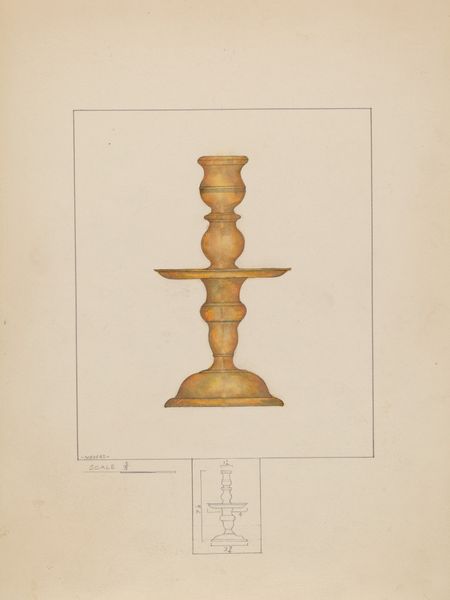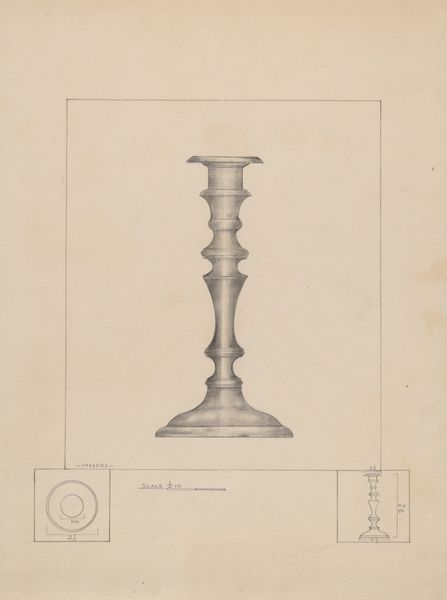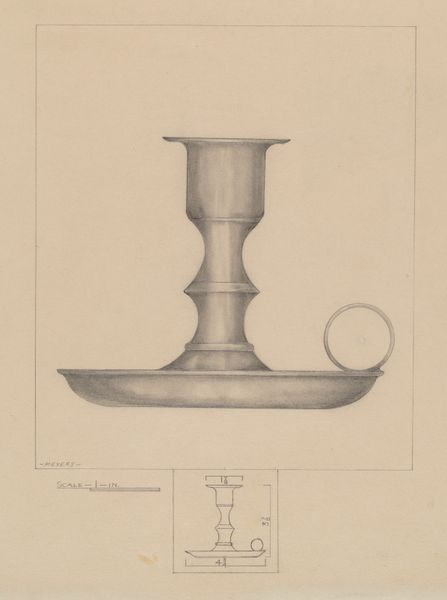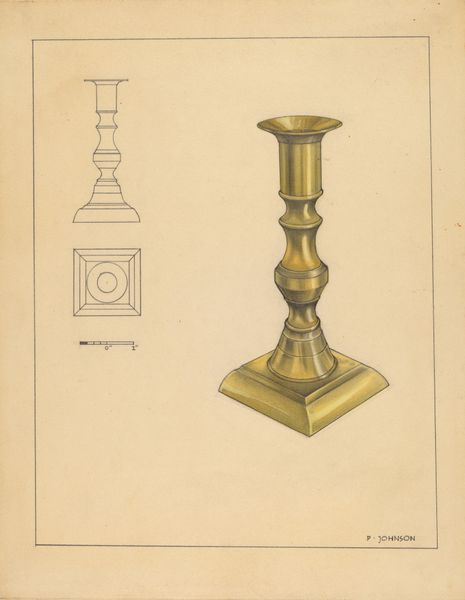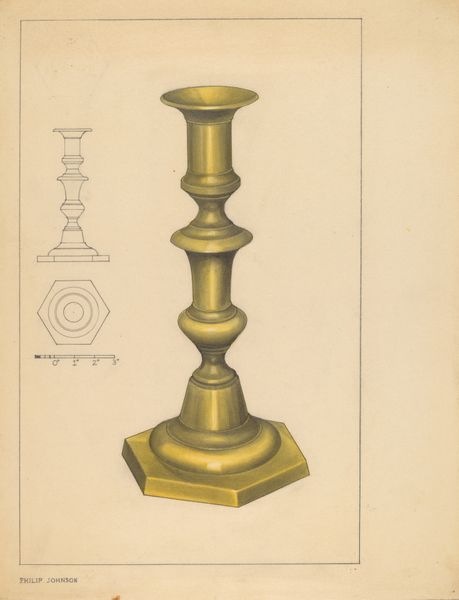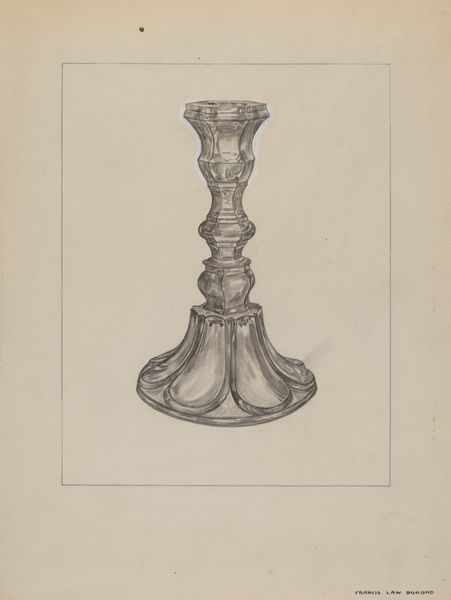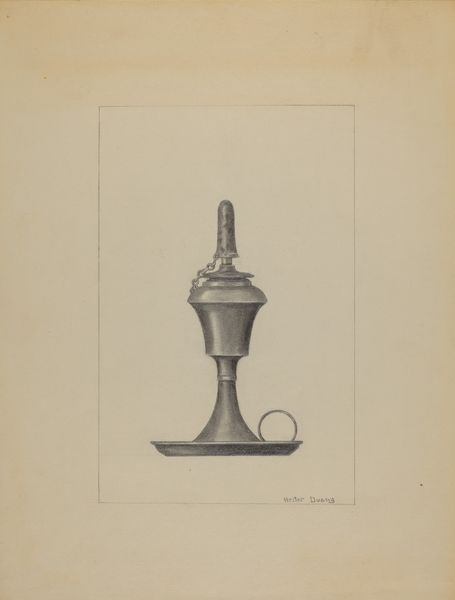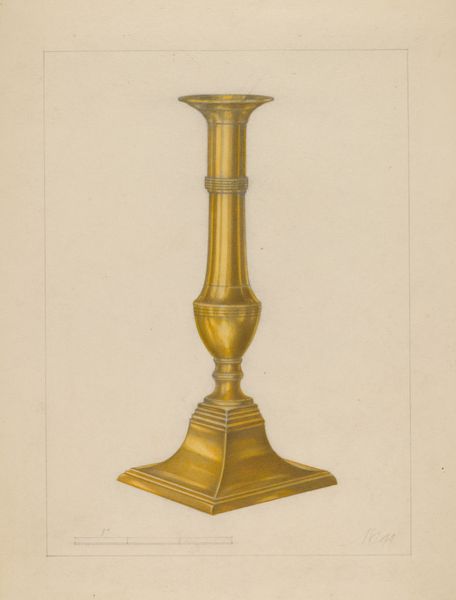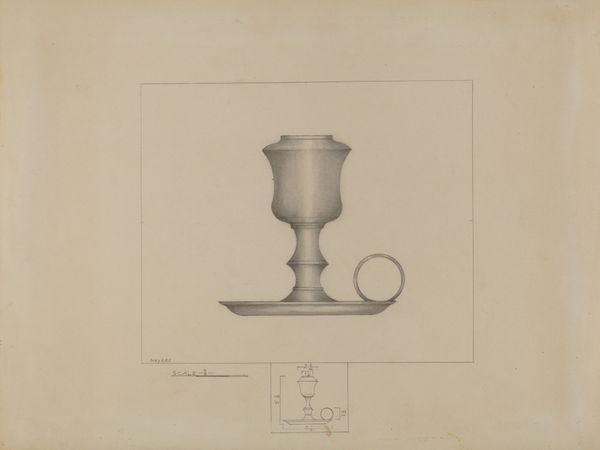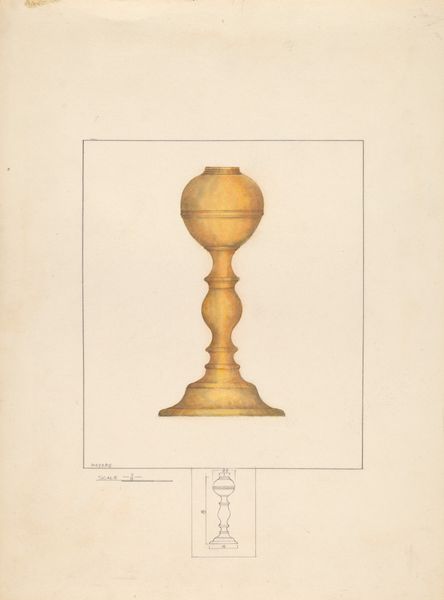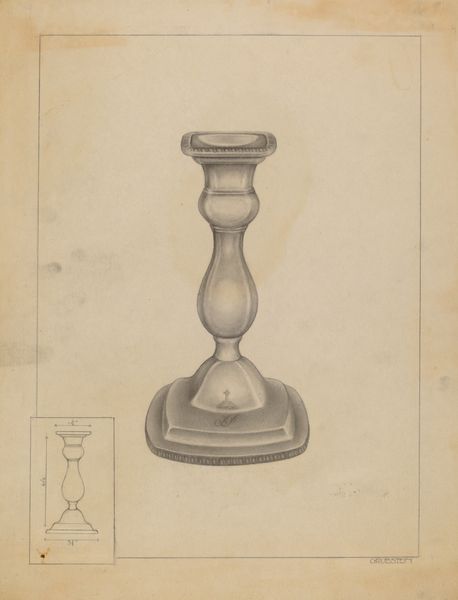
drawing, watercolor
#
drawing
#
water colours
#
watercolor
#
watercolour illustration
#
academic-art
#
watercolor
Dimensions: overall: 28.1 x 22.9 cm (11 1/16 x 9 in.) Original IAD Object: 8 1/2" high; 5 1/2" wide
Copyright: National Gallery of Art: CC0 1.0
Editor: Here we have Henry Meyers' "Candlestick," created around 1937 using watercolor. It's rendered in soft, muted gold tones. It seems like a very straightforward, academic depiction. What do you see in this piece, beyond just the representation of a common household object? Curator: Well, consider the context. This candlestick, rendered just before World War II, speaks volumes about shifting societal values. Notice the precision and care taken in its execution. It suggests a yearning for stability and tradition during a period of immense uncertainty. Think about the social role of art instruction at the time. What kind of visual values do you think these sorts of studies were trying to reinforce? Editor: I see what you mean. It’s more than just observation; it's about reinforcing certain skills valued at the time. Would it be fair to say there might also be political undertones, a visual embrace of classicism as a bulwark against more radical artistic and social movements? Curator: Precisely! The choice of such a humble, domestic object—rendered with academic precision—could be interpreted as a quiet resistance against the avant-garde movements gaining traction then. Art education during this era promoted skill, craftsmanship, and idealized subject matter. This wasn't just about learning how to paint; it was about perpetuating specific cultural ideals through imagery. Editor: That is really insightful! I never considered it in relation to what else was happening in the art world and politics at the time. Curator: By understanding the prevailing social and political landscape, we can decipher the multiple layers of meaning embedded in seemingly simple works like this candlestick. It underscores art's potential to express and reinforce cultural narratives, intentionally or not. Editor: Thank you for opening my eyes to a whole new dimension of interpretation. I'll never look at an art object the same way again!
Comments
No comments
Be the first to comment and join the conversation on the ultimate creative platform.
